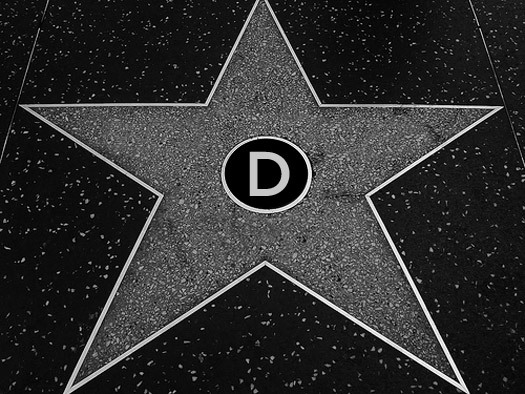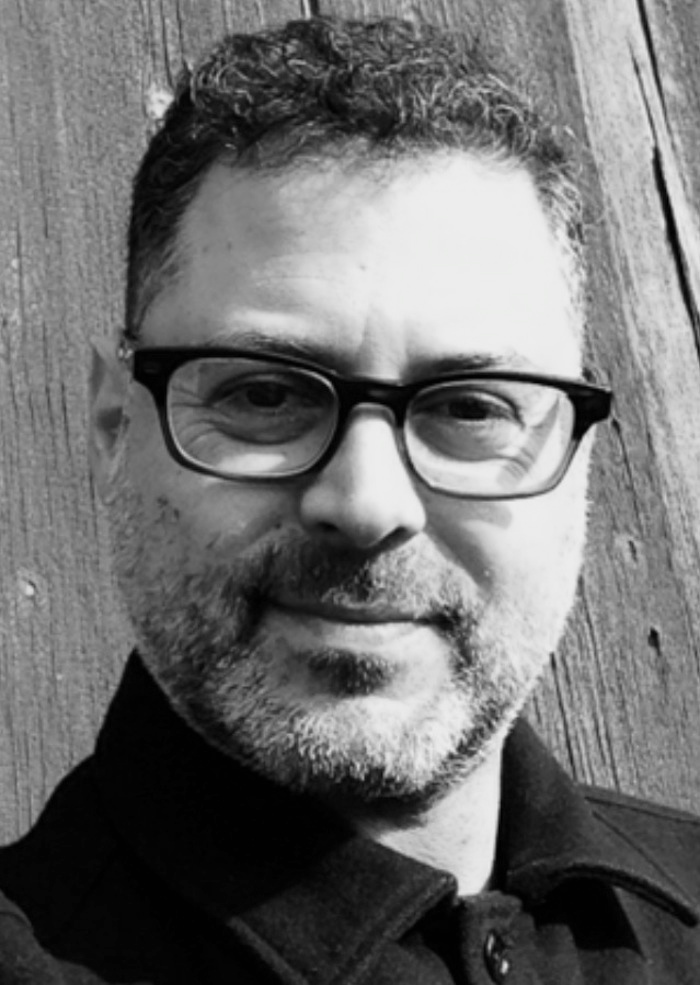
The famous movie Star had twice failed to show up for the interview. On both occasions a hotel suite had been booked, film lights set up, microphones tested, food and drinks ordered. On both occasions we waited for over five hours for her to arrive. The television crew passed the time by sending emails, making phone calls and gorging on the food. I paced.
This was our third and final attempt. In order not to inconvenience the Star by asking her to suffer a limo ride to the hotel we suggested filming in her apartment. Surprisingly, she agreed.
We arrived at the appointed hour and entered a space that was frozen in late 1970s style: the era of Halston, Studio 54 and endless blow. There were white leather sofas and mirrored walls and pristine marble floors. Over the fireplace hung a Warhol.
A chain-smoking assistant, looking like she hadn’t slept in days, led us to a small room that overlooked the New York skyline. A gleaming black Steinway piano dominated the space. Two walls were floor to ceiling glass. A tall almost life sized black and white photograph of the Star’s famous film-directing father lounged in a corner.
We wheeled our ungainly equipment into the spotless space. There were just three of us this time: a cameraman (also called the DP, or Director of Photography) a soundman and me. I had not worked with either before. My regular crew was booked on another job.
A film crew, like any small group that works together in pressured situations, builds up experiential knowledge over time. They develop the ability to carry out certain tasks without speaking; they defer to each other’s expertise; they watch each other’s back. I didn’t know these guys and they didn’t know me. I was on edge.
One of the most crucial moments when filming an interview takes place before the camera is even set up. It comes when you walk into the room and choose the shot. Part aesthetic and part practical, the choices you make literarily and figuratively set the frame for the rest of the job.
Usually the director takes the first stab at it. The cameraman will respond with thoughts on lighting, camera angle and over-all composition. Sometimes a chair will be placed in the vicinity of where the interviewee will sit and the soundman will “sit in” while the DP and the Director refine and discuss the shot. Will there be enough room for the lights? Will there be enough depth behind the interviewee? Will the background look elegant or cluttered? It’s not unusual to try two or even three variations.
This time, the DP had set up his camera up before I even had a chance to ponder the shot. He came from a news background and was fast and by-the-book. I usually like to take this moment slowly and to savor it: the search for a frame that is a little bit different, the feeling of being lost, and more importantly, the necessity of collaborating in order to come up with a solution. On this day, the process felt short-circuited.
I saw a different shot that would make use of the abundant natural light. Done correctly, the Star’s face would be suffused by a complimentary glow and the New York skyline would have a defused, almost abstract look to it. To get it right would take a lot of work and patience. It was also risky if the light changed abruptly. But it had the potential to look filmic.
The DP disagreed. He thought it was safer and more practical to shoot the Star going in the opposite direction with the piano and a wall of books behind her. It was a more controlled and conventional set-up.
We debated and I decided he was probably right. It cut down on the variables and there were plenty already in this situation. My job was to get usable footage. With amateur art direction we could re-arrange the background and make sure it didn’t look cliché like an all those Sixty Minute interviews with flowers in the background.
While the crew set up their equipment I sat in what would be the Star’s chair and crammed: I re-ordered a question or two, looked quickly at some research notes and tried out a couple of phrases in my head. Sitting in the Star’s chair gives the cameraman a stand-in subject so that he can position his lights. It also gives the soundman a position for his boomstand and microphone. He can also pre-check his sound levels.
But sitting in the interviewee’s chair serves a third function as well: it always reminds me what it feels like to face the looming eye of the unblinking camera and to experience the blinding glare of the lights. It also reminds me to be empathetic and not to forget how much pressure even an experienced interviewee is under to perform. To paraphrase Norman Mailer, the interviewer serves up 1% of himself during an interview while the interviewee gives up 99% percent.
The cameraman positioned his lights and checked his focus. He stood back and indicated that he was finished. This is the second crucial moment: when the director looks at the monitor, or through the lens of the camera, and makes comments on the shot.
I looked at the monitor. The soundman was “sitting in” for us. The light fell evenly, if too brightly, across his face; there was a no modeling or shadow. The background was a mess: light bounced off the shiny black piano and the books were a jumbled pile. The objects on top of the piano — including an Emmy, a Grammy and a Golden Globe award — were illegible lumps of metal. This was not the stylish and elegant composition appropriate for an International Star. It was the shot for a hair-brained professor.
I told the DP that it wasn’t working. He made a face. We re-arranged the books, moved the awards around and adjusted the lights. Still not working. We moved the camera to the right, shifted the chair. We even (bravely) moved the piano a few inches to cut down on the glare. All to no avail.
“Just go with it, man.” he said. “Relax.”
I couldn’t relax. The shot wasn’t working but I couldn’t solve it. My frustration (mostly with myself) grew. The cameraman stopped making suggestions. The soundman, wisely, kept quiet.
Suddenly the Star appeared in the doorway. She had a martini in one hand and a cigarette in the other (I kid you not). I mustered professional pride and introduced myself and the crew. The Star looked suitably bored.
The Star pushed herself off the doorframe and sashayed over to the monitor.
“Oh darlings, this isn’t good at all.”
She stood back and looked the room over. My heart sank. She walked over to the piano, put her drink down, lifted two of the awards and put them on the floor. She then slowly moved the remaining awards around on top of the piano into a geometric pattern. She picked up her drink and walked over to the corner of the room. With a bump of her hip she slid the photograph of her father over five inches. She then put her drink down again and removed a hefty stack of books from the shelf. She picked the two awards off the floor and placed on them in the emptied space. She stood back. She then spun them 180 degrees so that the light glinted off their surfaces. You couldn’t tell exactly what they were; they just glowed. She stood back again and took a drag of her cigarette.
“I think that should work better.”
I looked through the monitor. It did look better, infinitely better.
“Thank you”, I said, “that really helps.” With a futile attempt at authority I pointed to the chair.
“If you take your seat” I said, “we can begin.”
We took our positions and I asked my first question.
The Star began with a strong answer that included a quip and a revealing insight. But her next answer trailed off into a digression. I re-phrased and tried again. I got about twenty seconds of useable material.
I moved on to the next question.
“Oh that’s boring.” She said.
I abandoned my pre-set questions, changed tack, and asked about her current work. She didn’t fall for it.
“Darling? Where did you get those jeans? They look great on you.”
I was in trouble. I immediately moved on to the most important question, the one I knew we needed to make the film work.
She answered but it was barely coherent. I was losing her. Her drink was winning.
“Do you play the piano?” she asked.
“Chopsticks.” I said hoping for a laugh.
“Well let's hear it then.”
I got up and moved over to the piano and sat down. She stood above me. I was sweating. I plastered a devil-may-care smile on my face and tried out a few notes. She laughed. And then she provocatively leaned over the piano and began to sing.
I have absolutely no memory of what she song she sang. I remember thinking “I can’t believe that I’m being serenaded by an International Star.” Swiftly followed by “I am going to lose my job.” I remember the cameraman’s smirk when I looked over to him for support. But mostly I remember how hard it was to keep that ridiculous smile hiked up on my face. It actually hurt.
The interview had tanked. Recovery was impossible. I tried to relax and enjoy the moment but I failed.


Comments [2]
D stands for DIFFICULT, DISCONCERTING, DISAPPOINTING.
11.11.11
11:11
11.12.11
02:34